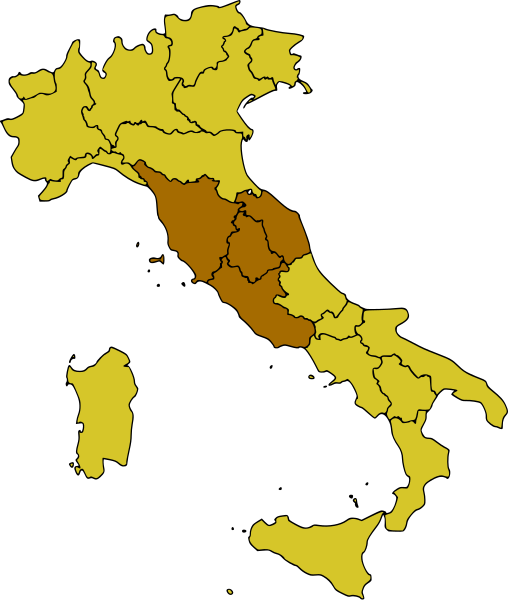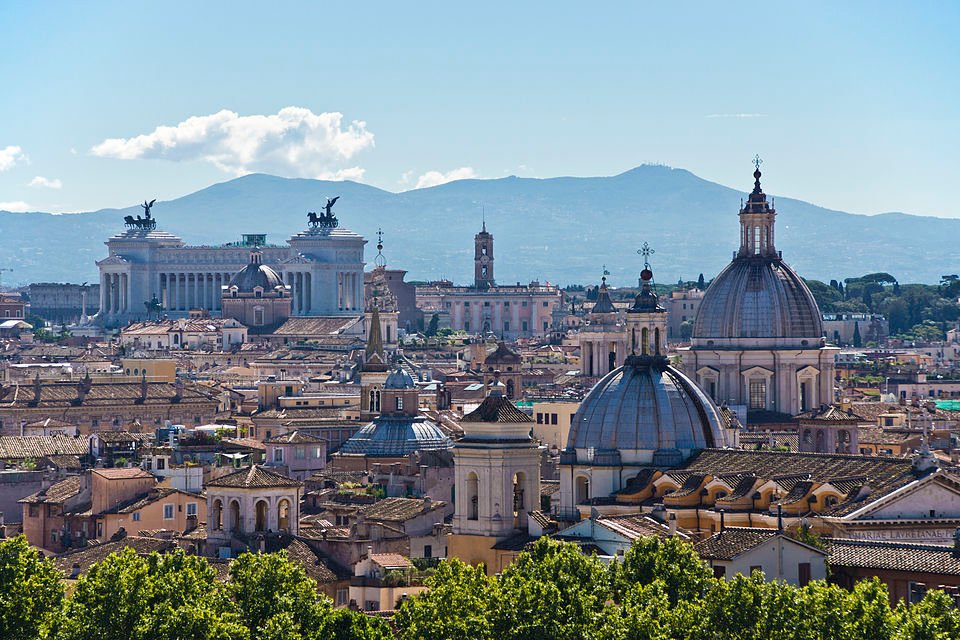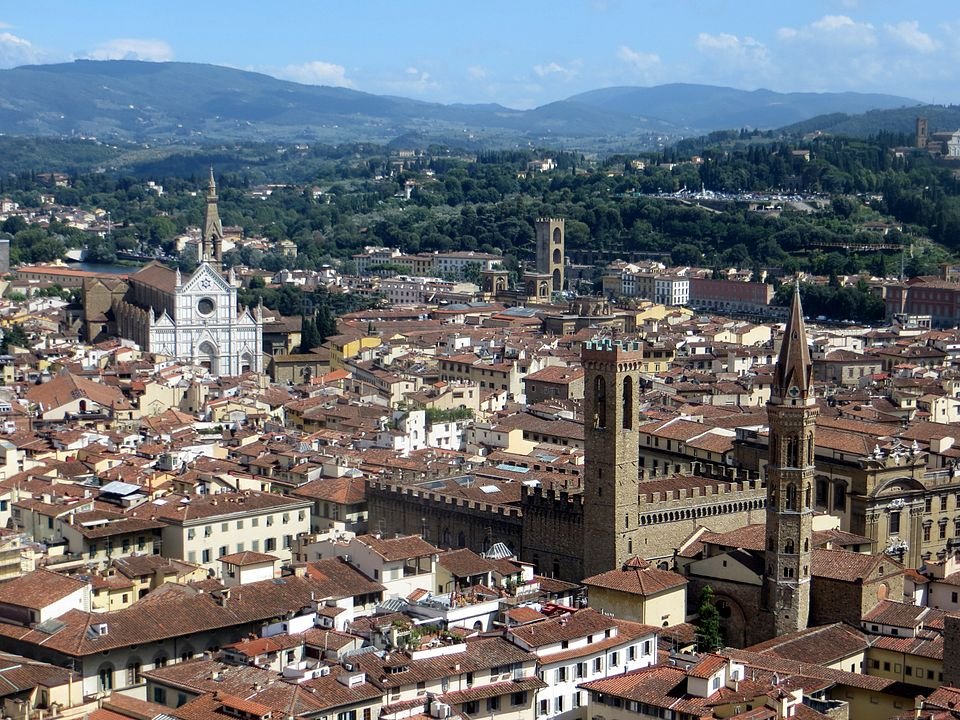Central Italy

Introduction
Central Italy is an area traversed by the Apennine mountains and bordered by the Adriatic Sea to the east and by the Tyrrhenian and Ligurian Seas to the west. Key rivers in the region include the Tiber, the Arno, and the Liri-Garigliano, while significant lakes include Trasimeno, Bolsena, Bracciano, and Albano.
| Area (km² / sq mi) | 58,052 / 22,414 |
History of central Italy
Prior to the Italian unification in 1861, this region was split between two major states: the Papal States and the Grand Duchy of Tuscany, each with its own unique trajectory and governance.
The Papal States, also known as the State of the Church, were territories under the direct rule of the pope, starting in the 8th century. Their political power expanded over time, especially during the Renaissance, covering areas like Lazio, Umbria, and Marche. These lands symbolized the temporal authority of the pontiff, distinct from his spiritual leadership. Gradually, these areas were absorbed into the Kingdom of Italy, with Rome and Lazio being the last to fall in 1870.
Even after losing territorial power, the papacy maintained its presence in Rome, particularly within the Leonine City, until 1929, when the Lateran Treaty between the Vatican and Mussolini’s government officially established Vatican City as a sovereign state, resolving the long-standing conflict known as the “Roman Question.”

The Grand Duchy of Tuscany emerged in 1569, replacing the Republic of Florence. Its first leader was Cosimo I de’ Medici, who unified most of Tuscany and received the grand ducal title from the pope. The Medici dynasty governed until 1737, succeeded by Francis Stephen of Lorraine and his descendants. Though it experienced prosperity under Cosimo I, the duchy later declined economically and politically. Under Napoleon, Tuscany briefly became the Kingdom of Etruria, governed by the House of Bourbon-Parma. In 1859 it was annexed to the United Provinces of Central Italy, a satellite of the Kingdom of Sardinia. Tuscany joined the newly unified Italian state in 1860, following a plebiscite that confirmed popular support.
Languages of central Italy
Central Italy is mainly characterized by the use of the central Italian dialect alongside the Tuscan variety. In addition to these, other tongues such as Gallo-Piceno (also called “Gallo-Italic Marche” or “Gaul-Marche“) are spoken in the northern parts of the Marche region, including the Provinces of Pesaro and Urbino and northern Ancona. Furthermore, Neapolitan is heard in southern Lazio, parts of southern Marche, and the eastern edges of Umbria.
The phrase central Italian describes a group of Italo-Romance dialects concentrated in the so-called Area Mediana, which spans a significant portion of central Italy. This region can be further split, where the southern segment retains the name Area Mediana, and the northern segment is often called the Area Perimediana. These two zones are roughly separated by an imaginary line running from Rome southwest to Ancona northeast, a key marker for differentiating the linguistic traits in these areas.
In the Early Middle Ages, the reach of central Italian dialects extended northward into Romagna and covered the entire regions now known as Lazio, Abruzzo, and Molise. Over the centuries, however, the dialects in these places gradually merged into the Gallo-Italic family in the north and the Southern Italo-Romance group further south. The dialect spoken in Rome underwent strong Tuscan influence starting from the fifteenth century, losing many of its original central Italian elements. The Tuscan dialect, prevalent in Tuscany, Corsica, and Sardinia, became the basis for Standard Italian, thanks in large part to the enduring influence of literary figures such as Dante Alighieri, Petrarch, and others.
Culture of central Italy
Central Italy has been shaped by many different peoples over the centuries, including the Celts, Etruscans, Picenes, Umbri, Latins, Romans, Byzantines, and Lombards. Its natural environment is protected by several national parks, with the Abruzzo, Lazio and Molise National Park standing out as the oldest in the Apennines and the second oldest in Italy. This park plays a vital role in preserving wildlife like the Italian wolf, Abruzzo chamois, and Marsican brown bear.
This region is one of Italy’s top tourist destinations, featuring many UNESCO World Heritage Sites and famous cities. Rome attracts millions with its ancient Roman landmarks such as the Colosseum. Florence, known as the birthplace of the Renaissance, is Tuscany’s most popular city, while nearby towns like Siena and Pisa offer rich history and culture. Even smaller regions like Umbria boast important cultural centers like Perugia and Assisi. Both Lazio and Tuscany are also well-known for ecotourism due to their beautiful landscapes.

Political division of central Italy
The following regions fall entirely within this geo-cultural region:
- Marche
- Tuscany
- Umbria
The following regions are not entirely included within the Italian geo-cultural region:
- Lazio. Although this region is officially part of central Italy, not all of its territory aligns perfectly with the region’s geo-cultural identity. In fact, several areas in the far south and east of Lazio, such as Cittaducale, Amatrice, Sora, Cassino, as well as coastal towns like Gaeta and Sperlonga—are often seen as culturally closer to Southern Italy. This is mainly due to their past inclusion in the Kingdom of the Two Sicilies and the continued use of Southern dialects. Despite being administratively part of central Italy, their cultural roots link them more closely with the South.
When viewed from a broader geographical perspective, the definition of central Italy sometimes stretches to include Abruzzo and Molise. Though these two regions are commonly seen as southern due to linguistic, cultural, and historical factors, they are geographically located in the central belt of the peninsula. This dual identity has led to some ambiguity in classification depending on the context.
Source(s):
https://en.wikipedia.org/wiki/Central_Italy
Photo(s):
1. es:Usuario:Mnemoc, CC BY-SA 3.0 http://creativecommons.org/licenses/by-sa/3.0/, via Wikimedia Commons
2. Bert Kaufmann from Roermond, Netherlands, CC BY-SA 2.0 https://creativecommons.org/licenses/by-sa/2.0, via Wikimedia Commons
3. Luca Aless, CC BY-SA 4.0 https://creativecommons.org/licenses/by-sa/4.0, via Wikimedia Commons
